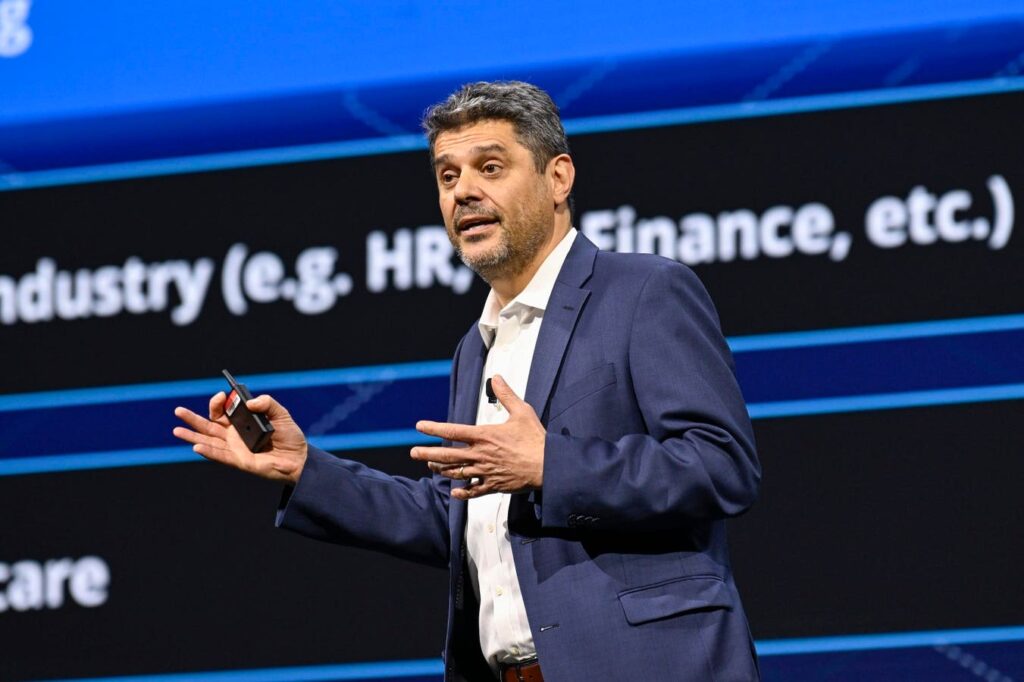Late last year, while attending an Applied Strategic Foresight course at the Copenhagen Institute for Future Studies (CIFS), I learned about a model called the Futures Triangle. This model helps explore the dynamics of change, particularly when considering what could happen in the future.
To do that, the model asks users to consider three different forces:
- The Push Of The Present refers to the forces driving you forward into the future, such as competitive pressures, the desire to grow and innovate, and the promise of new technology.
- The Pull Of The Future refers to the forces that are pulling you into the future, such as an organisation’s vision, strategy, desires and, again, the promise of new and emerging technology.
- Finally, there is the Weight Of The Past, which refers to the barriers that we need to overcome to move forward and achieve change. CIFS refers to these as ‘anchors.’
I highlight this model because it strikes me that much of the discourse within the customer service and experience domain is dominated by talk about artificial intelligence (AI), from how brands want to become AI-first, powered, or enabled, to how they intend to leverage AI to be more competitive, more efficient, more productive, more profitable, engaging, and more just about everything else.
Now, if you consider the discussion taking place in the customer service and experience space and how it could be impacted by AI, you will quickly realise that the conversation encompasses the first two forces: The Push Of The Present and The Pull Of The Future. However, what is largely missing from the discourse is a consideration of the barriers and challenges that organisations must overcome, their ‘anchors’ if you will, if they are to progress with any sense of pace or certainty in their AI ambitions.
Detailing the scale of the challenge or the size of the ‘anchors’ that weigh on many large enterprises and how to address them was one of the key themes of Pegaworld, Pega’s annual customer event that recently took place in Las Vegas.
At the event, they released new research that showed that the transformation of legacy technology is one of the key anchors that are holding organizations back from adopting and leveraging new technologies such as cloud-based artificial intelligence systems. This, in turn, hinders their efforts to enhance customer, employee, and business outcomes and embrace an AI-enabled future.
Specifically, their research found that:
- 68% of respondents highlighted that outdated systems and applications are holding their organizations back from fully adopting modern technologies.
- 88% of respondents expressed concern about how their technical debt is holding them back in the race against more agile, innovative competitors.
- 48% of respondents say that they find themselves in a tough spot: They know they ought to move on from their legacy applications, but the truth is that these systems remain vital to their business operations. Despite their desire to modernize, the critical role these applications play makes it nearly impossible to let go.
- Finally, 47% of respondents say their oldest legacy application is between 11 and 20 years old, while 16% run apps between 21 and 30 years old.
These are significant challenges, and Pega’s response is centred around its Blueprint solution, a Generative AI-powered workflow design agent that helps accelerate new application development projects from months to weeks. Soft-launched about five weeks before PegaWorld last year, over 150,000 Blueprints have now been created, clearly demonstrating an appetite for this type of capability.
However, with a specific eye on legacy transformation, they have extended Blueprint’s capabilities.
This was demoed on the main stage by Kerim Akgonul, chief product officer at Pega, who showed how their upgraded Blueprint solution can now ingest a narrated video of an old Credit Card Management System COBOL application and be repurposed into a demo of a new application that, following Pega’s Center-Out business architecture and Agentic Process Fabric approach, can be delivered consistently across channels and platforms.
The demo was truly impressive and illustrated how legacy apps can be easily captured, replicated, re-imagined, piloted, tested, and developed further on a modern agentic platform. It also highlighted some of the real challenges that enterprises face when modernising their technology stack.
For context on the size of the legacy system problem and how much could still run on COBOL. According to a Goldman Sachs CIO Survey, referenced in a presentation by Benedict Evans, the distinguished technology industry analyst, as of June 2024, only 30% of enterprise workflows are performed in the cloud, and that number, according to the same survey, was only expected to rise to just over 45% by the middle of 2027. In addition, another study from a couple of years ago found that there are still around 200 to 250 billion lines of COBOL code in daily use today, and around 70% of large corporations still rely on COBOL for much of their mission-critical work. For the new non-technical among us, COBOL is a programming language created in 1959, making it more than 60 years old.
However, Pega’s Blueprint solution’s new ingestion capabilities are not limited to video recordings of old COBOL applications. The solution can ingest all kinds of data from requirements documents, data schemas and integration signatures, code analysis documents, process diagrams, legacy application screen captures and videos, and other assets.
In a world where seemingly everyone is clamouring to use AI to improve and transform everything, ignoring and not addressing your ‘anchors’ feels like trying to drive into the future with the handbrake on.
Pega’s advancements to its Blueprint solution enable organizations to take the hand brake off, which, when combined with the new, growing and, frankly, exciting agentic capabilities of their Infinity platform, will allow them to accelerate into the future.
Read the full article here

